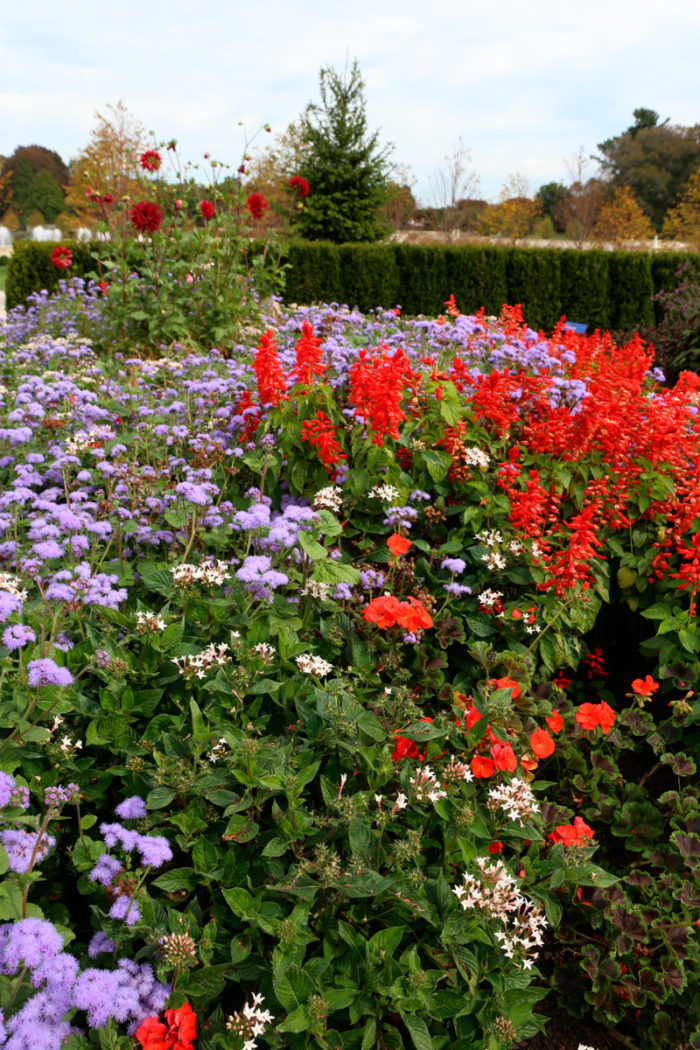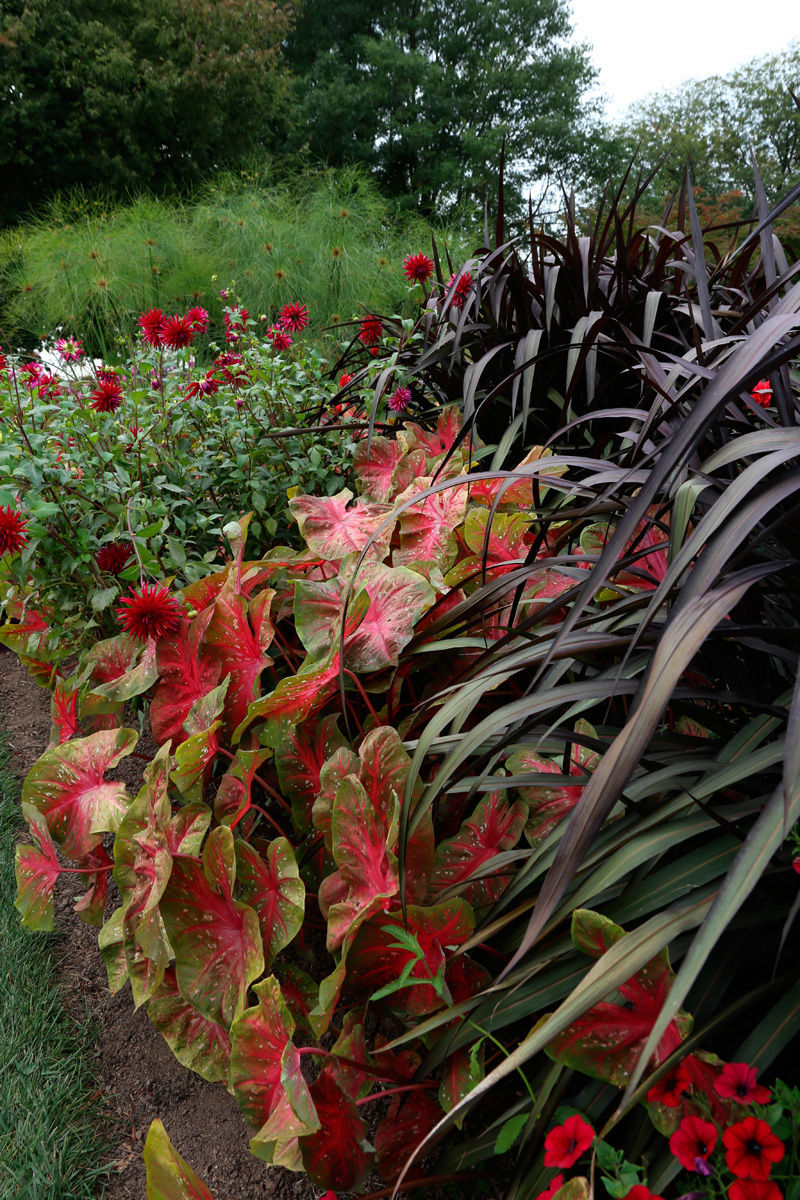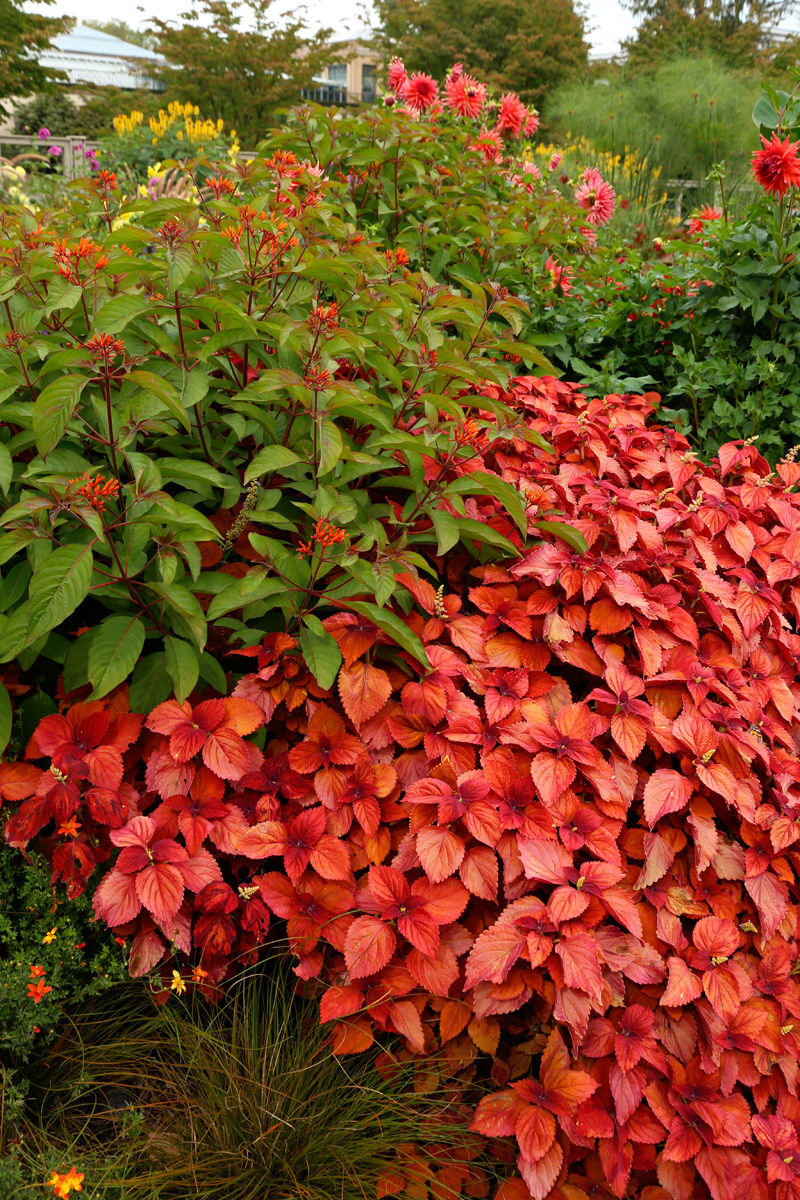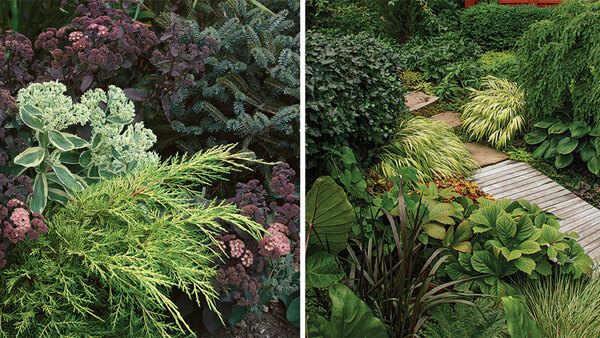
If you want to add excitement to your autumn garden, easygoing annuals and over-the-top tropicals can be the key to a wow-worthy late season. Horticulturist Tim Erdmann from Longwood Gardens in Kennett Square, Pennsylvania, provided the following tips for getting the most out of your annuals and tropical plants. For more inspirational ideas for using these seasonal sensations check out Design for a Late-Summer Show.
1. Right plant, right place
Just because a plant looks “tropical” doesn’t mean that it wants full sun in the hottest part of the garden. Many plants with large foliage grow at the bottom of a complex canopy in their native habitats and are used to looking for sun. Be sure to check a cultivar’s preferred conditions before you plant.
2. Ease into full sun
Plants from indoor nurseries and houseplants being brought outdoors should not go directly into full sun, even if they will eventually want that full exposure. A week or so outdoors in light shade should make for a more comfortable transition.
3. Stay on top of deadheading
Some annuals, petunias for instance, bloom all summer without intervention, but others need some extra assistance. Frequent deadheading helps a plant direct energy toward making new flowers instead of setting fruit or seed. Once a plant goes too far in this direction, it may think it’s at the end of its life cycle and lose considerable vigor. Deadheading and a little pruning will help plants retain their shape and apparent youth.
4. When planting, rough up the roots—or don’t
This should be judged on a plant-by-plant basis. Use your intuition. If the plant looks very young and hasn’t developed a root system yet, why bother it? On the other hand, if the plant has been in its pot too long and is rootbound to its shape, a few scratches will help to break that form and begin the process of rooting in.
5. Get your stakes in early
Larger annuals often need extra support, and once a plant has lodged or collapsed, it can be very hard to get back. The trick is to have your staking in place before it becomes apparent that you need it.
6. Water with care
Just after planting can be the trickiest time for watering. When checking for moisture, make sure you are feeling the root ball itself, rather than the soil surrounding it; you’ve just planted your annuals, the roots haven’t gotten that far yet! Gardeners tend to overwater at this time, but I like to see the annuals wilt a little bit. This tells me that the plants are ready for water, and it encourages the roots to explore the neighboring soil.






















Comments
It's So beautiful!
Log in or create an account to post a comment.
Sign up Log in